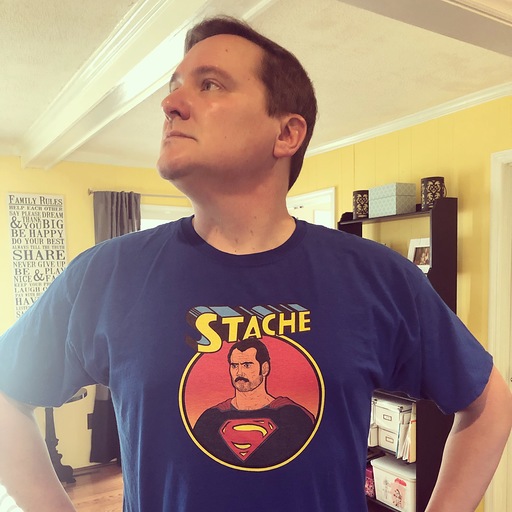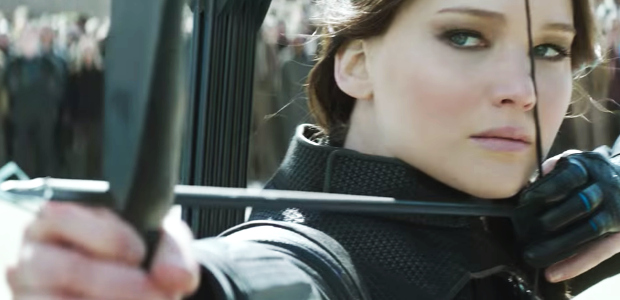Four years, and four films, after it began its journey, The Hunger Games franchise draws to its conclusion with the release of The Hunger Games: Mockingjay Part 2, a mouthful of a title for a movie that has less to say than we might have expected. Adapting the second half of author Suzanne Collins’ third book. Mockingjay goes out with a series of bangs (literally), but an ultimate whimper, as the payoffs promised in the previous three features arrive with a fizzle, and the dreary composition of the two Mockingjay films strip The Hunger Games franchise of a rousing finale.
Some who have read Collins’ third book tell me that the unusual choices made in The Hunger Games: Mockingjay Part 2 are the fault of the book. The novel has been described to me as “boring,” “strange” and “flawed,” and those terms certainly apply to director Francis Lawrence’s adaptation. The biggest issue I take with Mockingjay Part 2 is that it exists, at all. Very little happened in last year’s The Hunger Games: Mockingjay Part 1, beyond rebellion spokesperson Katniss Everdeen (Jennifer Lawrence, still great in a diminishingly interesting role) recording a promo to inspire the beleaguered residents of the Districts.
But I forgave the listless pace of Part 1 because I figured all of the action, the meat of the story, was being saved for Part 2. Greed in Hollywood now requires final chapters of YA novels to be broken into two parts – and the only reason given for this, from Twilight to Harry Potter, is because non-discerning audiences will gladly pay twice to see a story that can barely sustain one engaging movie, and has yet to justify the need for two films. Could Mockingjay have survived as one film? Undoubtedly. Would that have made it a better experience? Possibly, though I think the problems in the overall story still would have been evident.
Those reading this likely have followed along with the story, and won’t need to be caught up on what has happened so far – and what’s about to happen. But for the benefit of newcomers who’ve stumbled on this piece, here’s a quick rundown. Having been freed from the clutches of the evil President Snow (Donald Sutherland), Peeta (Josh Hutcherson) still suffers from bouts of brainwashing that have programmed him to want Katniss dead. The rebel leader, meanwhile, has decided that it’s finally time to take the battle right to Snow, which means Everdeen has to infiltrate The Capitol and slice the “head” off of the metaphorical serpent. Life in the Capitol doesn’t look much different than it does in the war-torn Districts, though. And in order to reach Snow’s mansion, Katniss and her team – which includes fellow Games survivor Finnick Odair (Sam Claflin) and the warrior Cressida (Natalie Dormer) – have to evade a series of traps that lead to impressive (and expensive) special effects that ultimately amount to minimal danger and even less suspense.
I enjoyed the first two Hunger Games. While set in a dystopian landscape, they at least figured out ways to distinguish themselves from each other, as well as from the glut of YA adaptations that the first Games triggered. Catching Fire ramped up the challenges in the arena, and set up a fantastic battle between the oblivious “haves” of The Capitol and the fed-up “have nots” of the Districts. Lawrence’s Everdeen was a reluctant savior, and the fiery symbol of her Mockingkay pin – and the there-fingered salute – meant something that has been buried by the militaristic tone and blasé visual palette of the Mockingjay chapters in the saga.
Francis Lawrence, who joined the series with the illuminating Catching Fire, stripped all of the color and passion from this series in the Mockingjay films, muting Lawrence and washing out the environment for a combination of films that now look like they are stealing from the Maze Runners or Divergents of the world, instead of leading the charge and showing those movies how it’s supposed to be done. Now that the two films exist, fans of the series likely will appreciate being able to transition from one film to the next and continue the adaptation as it was meant to be viewed. But even the narrative payoffs – from Katniss Everdeen’s eventual showdown with President Snow to the final stop on the hero’s destination – land with soft punches. What happened to the passion of rebellion? Where’s the grand spectacle, the soaring triumph of an underdog population casting off its dictatorship and rising up to grasp its long-awaited freedoms? They aren’t here. Were they ever on the page of Collins’ novels?
In the end, because of the diluted Mockingjay chapters, The Hunger Games series has become the equivalent of Avatar, in my mind. I can understand why it is popular with a larger-than-expected fan base, but personally, I’m struggling to remember specific details of anything that has happened in the final two films on this series. A month from now, you could show me a scene from any of the four Hunger Games movies at random, and I doubt I’d be able to tell you which feature in the saga from which it came. Franchises like this should have staying power. Movie series that earn the type of money that The Hunger Games pulls in should be memorable. To me, they aren’t. So what was the point?

Sean O’Connell is a journalist and CinemaBlend’s Managing Editor. Having been with the site since 2011, Sean interviewed myriad directors, actors and producers, and created ReelBlend, which he proudly cohosts with Jake Hamilton and Kevin McCarthy. And he's the author of RELEASE THE SNYDER CUT, the Spider-Man history book WITH GREAT POWER, and an upcoming book about Bruce Willis.











